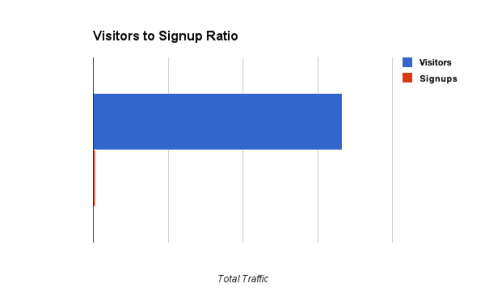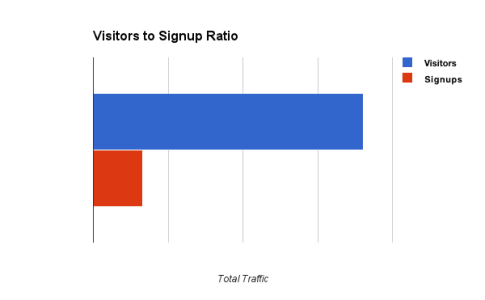Web Marketing for Developers: From Visitors to Users
At the fictional Chilly API HQ (bedroom), we’re celebrating the first 5000 visitors. Our website is live, our blog post on how to build an API with Sinatra took off and, for the moment, all seems to be going well. Except that of those visitors, about 30 have signed up and only 2 are actually \[…\]
Introduction
At the fictional Chilly API HQ (bedroom), we’re celebrating the first 5000 visitors. Our website is live, our blog post on how to build an API with Sinatra took off and, for the moment, all seems to be going well.
Except that of those visitors, about 30 have signed up and only 2 are actually using our API.

Uh oh.
We know that we’ve target the right audience – so what’s happening?
This situation tends to occur with successful acquisition but not so with activation.
What is Activation?
Activation is the second stage in the AARRR funnel which allows you to track who’s using your product, following on from Acquisition in our prior post of the Web Marketing for Developers series. This is an important step: tons of people visiting your site and even signing up doesn’t mean much if they’re not using your product.
Tracking Activation
You’ll need some form of logging mechanism built in to track the number of calls to the API itself. In our case, the best way to know if a user ‘activated’ is to see if they actually used the API. We’ll define that as a user who polled our API at least 10 times. Other Activation metrics could simply be signups or API key requests.
Getting More Active Users

Much better.
Tons of people visiting your site doesn’t mean much if they don’t actually sign up and use your product. If you’re getting the number of visitors you want but not the proportion of active users, you may want to consider taking several actions:
Ask!
You’re forgiven if you just rolled your eyes at this, but sometimes the simplest action can be the most effective.
We’ve discussed this before in a prior blog post on Intercom, but remember that your users are humans too – and asking them, short and simple, can yield surprising results. Someone signed up for your product, fiddled around a bit but stopped using it?
Send them a quick, personal email querying why, or if there’s anything you can do better. This shows you value their input – and they’ll be much more inclined to help you too.
Improve UX
How easy is it for a visitor who has signed up to get around to using your product? Do you need those 10 required fields on your signup page? Does it take convoluted navigation for someone to get to an account dashboard?
These are all simple things which on their own might not matter much, but ball up to impede the customer experience. Your product can work exactly as advertised but if the experience of using it is not on par with other services, they’re much less likely to stick around. Here are some simple ways in which you can improve the user experience with your product:
- Ease of support. Are users able to get in touch with you should they have issues? Even if they don’t need it, potential users should feel secure in knowing that you’re ready to help when they run into issues.
- Page Optimisation. Is your website converting visitors as well as it could be? Does it spell out why someone should use your product over someone else’s? You need to convince visitors that you’re worth their time. You’ll certainly believe in your own work – but you’ll have to sell it to others.
Give Something In Return
We’ve mentioned before that you’ll be competing with various other products for limited developer attention. ‘Early adopter’ deals are a good way of attracting the first users – make their experience, simply put, magical.
Early adopters can make or break your success – they’re great at seeing the ‘wow’ factor of your product and will happily tell the world about it. Conversely, they’re also quite ready to criticise if needed: everything you’ve done so far to market it will play into their reaction.
Next Steps
Here we’ve covered the next critical stage of the funnel, Activation. Getting people to your website or repo is one thing, getting them to use it is a separate challenge altogether. With the right actions though, improving the activation metric should be well within reach.
Moving on in the funnel will be the next stage, Retention. Think about these questions when considering how to keep people with your product:
- What are you doing to keep your users coming back?
- How are you engaging with users beyond your product?
To keep up to date with this series, follow us on Twitter or subscribe to our RSS feed!